
Immortality, Inc.
by
Chip Walter
Published 7 Jan 2020
It’s tight quarters, but in the vitrified world, people don’t seem to much complain about the crowding. In 2016, of the 149 patients housed at Alcor, 37 were women; the other 112 were men. Another 1,116 had already signed on to join the current tenants at some future date, including people like Ray Kurzweil, PayPal co-founder Peter Thiel, biogerontologist Aubrey de Grey, nanotechnology pioneer Eric Drexler, and, of course, Ralph Merkle. The average age of the currently vitrified is 65. Hixon is also Alcor’s chief depositor. When a new patient arrives, he is the man who sees them to their next, but hopefully not final, resting place. Their bodies are swaddled in a chilled sleeping bag and slipped into a metal pod of Hixon’s design.
…
Maris knew it might seem a little out of the ordinary—well, maybe way out of the ordinary—but he hoped to get Levinson’s feedback. He wanted to create a start-up designed to cure aging—even death itself. Levinson had been aware, vaguely, of various efforts to extend life. He had heard of Ray Kurzweil’s prescriptions for radical life extension, had come across Aubrey de Grey’s work on abolishing aging here and there, and suspected the National Institute on Aging (NIA), Harvard, MIT, and other organizations of that ilk had likewise dabbled in the question. But this was a different beast entirely. Google was involved, and Google had a way of bending the fabric of culture and economics the way black holes bend light and gravity.
…
This man, too, had a way with words and a penchant for combining science and logic with outrageous pronouncements. And he, too, was hell-bent on redefining the sainted meanings of aging and death. His name was Aubrey David Nicholas Jasper de Grey, and the world would soon hear of him. 13 | LIFE EVERLASTING It was 4 a.m. in Manhattan Beach, California, and Aubrey de Grey was knackered. Still, he couldn’t sleep, partly because his brain was stuck in the British time zone he had departed just yesterday, and partly because he was having a eureka moment. He had flown over from Cambridge and spent June 24, 2000, submerged in roundtable discussions and debates with gerontologists from all over the world.
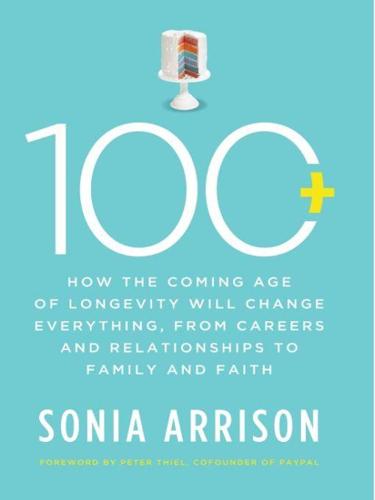
100 Plus: How the Coming Age of Longevity Will Change Everything, From Careers and Relationships to Family And
by
Sonia Arrison
Published 22 Aug 2011
Mehmet Oz, “High-Tech Ways to Extend Your Life,” The Oprah Show, March 24, 2009, www.oprah.com/health/Life-Extension-Technology-and-Tissue-Regeneration. 8 Ibid. 9 Gladwell, The Tipping Point, 66. 10 Aubrey de Grey with Michael Rae, Ending Aging: The Rejuvenation Breakthroughs That Could Reverse Human Aging in Our Lifetime (New York: St. Martin’s Press, 2007), 10. 11 Aubrey de Grey, The Mitochondrial Free Radical Theory of Aging (Austin, TX: Landes Bioscience, November 2003); Michael Finkel, “Life Begins at 140,” GQ, May 2010. 12 Interview with Aubrey de Grey, November 20, 2010. 13 Finkel, “Life Begins at 140.” 14 Ben Goertzel, “AI Against Aging: Accelerating the Quest for Longevity via Intelligent Software,” Biomind LLC, www.biomind.com/AI_Against_Aging.pdf. 15 Ibid. 16 Ibid. 17 See Ray Kurzweil’s biography, www.singularity.com/fullbiography.html. 18 Ray Kurzweil, The Singularity Is Near (New York: Penguin, 2005), 323. 19 Ray Kurzweil and Terry Grossman, Fantastic Voyage: Live Long Enough to Live Forever (New York: Plume, 2005).
…
As a Wired News article puts it, “DARPA is looking to re-write the laws of evolution to the military’s advantage, creating ‘synthetic organisms’ that can live forever—or can be killed with the flick of a molecular switch.”88 Synthetic biology has many implications, but for those concerned with extending human health span, Dr. Aubrey de Grey offers what he believes is a comprehensive road map to fighting aging. A computer scientist turned gerontologist, de Grey believes that there are seven different ways to engineer around the damage that aging inflicts on our bodies, which collectively may deliver comprehensive regenerative medicine against aging.
…
The population could shrink even further if the number of people choosing not to have children at all increases. TABLE 5.1 GDP Per Capita and Changing Family Size Some futurists have implied that as people live longer, the rate of childlessness may increase. For instance, aging theorist Aubrey de Grey argues that “our presumption that there is this innate drive to have kids, quite often, may not be so strong as we may have been brought up to believe.”75 The idea is that women (and men) may be so satisfied with their lives (careers, relationships, travel) that they will keep putting off having children until they finally decide that they don’t really need to have children in order to live fulfilling lives.
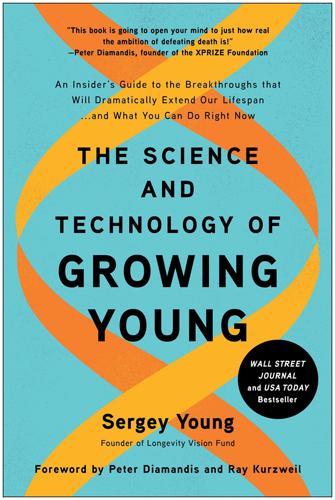
The Science and Technology of Growing Young: An Insider's Guide to the Breakthroughs That Will Dramatically Extend Our Lifespan . . . And What You Can Do Right Now
by
Sergey Young
Published 23 Aug 2021
—Ray Kurzweil, inventor and futurist “Being alive and healthy is the greatest joy that exists, and there has never been a better time to be alive than today. This book is going to open your mind to just how real and close-at-hand the ambition of defeating death is!” —Peter Diamandis, founder of the XPRIZE Foundation “Amazing research and the most exciting breakthroughs in the field of biomedicine and gerontology. Highly recommended!” —Dr. Aubrey de Grey, Chief Science Officer of the SENS Research Foundation “Read this book now. Researchers now know why we get old and what to do about it. It is now possible to grow younger. The Science and Technology of Growing Young will show you how to do it!” —Dave Asprey, founder of Bulletproof and four-time New York Times bestselling author “The Science and Technology of Growing Young not only explores the leading edge of where we are, but where we are going in longevity research.
…
As you begin reading the next two hundred pages, we wish you a healthy and happy next two hundred years. CHAPTER 1 LIFE AT 200 How and When Technology Will Enable Us to Live Longer Than We Ever Thought Possible “You can live long enough to live forever.” —Ray Kurzweil, Inventor and Futurist “The first person to live to 150 has already been born.” —Dr. Aubrey de Grey, Biogerontologist “Until death, it is all life.” —Miguel de Cervantes, Author, Don Quixote Picture yourself on the occasion of your two hundredth birthday. You wake up in your hermetically sealed, temperature-and-oxygen-optimized bedroom. You have slept the precise amount of time your body requires.
…
Instead, we will see people in the not-very-distant future living to 100, 150, or 200 years of age, and even longer than that, while staying healthy, vigorous, and mentally adept. If that sounds crazy, read on. Entrepreneur David Gobel, together with the father of biogerontology (and scientific advisor to my Longevity Vision Fund), Aubrey de Grey, are founders of the not-for-profit Methuselah Foundation, whose goal is to “make ninety the new fifty by 2030.” David and Aubrey came up with the longevity escape velocity model of life expectancy, which predicts that humans will be able to live indefinitely when advances in medicine and technology outpace the passage of time.

To Be a Machine: Adventures Among Cyborgs, Utopians, Hackers, and the Futurists Solving the Modest Problem of Death
by
Mark O'Connell
Published 28 Feb 2017
“Personally,” said Max as we made our way through the patient care bay toward the exit, “I’m hoping to avoid having to be preserved. My ideal scenario is I stay healthy and take care of myself, and more funding goes into life extension research, and we actually achieve longevity escape velocity.” He was referring here to the scenario, projected by the life extension impresario Aubrey de Grey, a scientific advisor at Alcor, whereby for every year that passes, the progress of longevity research is such that average human life expectancy increases by more than a year—a situation that would, in theory, lead to our effectively outrunning death. “Of course, I could get hit by a truck,” Max said.
…
“Unlike the world of stuff,” he wrote, “in the world of bits the arrow of time can be turned backward. Death will eventually be reduced from a mystery to a solvable problem.” Solve the brain. Solve death. Solve being alive. Among the life extension researchers who had received funding from Thiel was an English biomedical gerontologist named Aubrey de Grey. De Grey was the director of a nonprofit called SENS (Strategies for Engineered Negligible Senescence). He had attracted considerable notoriety for the claim that he was currently developing treatments which would enable human beings now living to extend their life spans indefinitely. It was his specific contention that aging was a disease, and furthermore a curable one, and that it should be approached as such: that we should be prosecuting a great counteroffensive against our common enemy, mortality itself.
…
He saw Page and Brin’s decision to set up the company as a personal vindication, as well as an extremely encouraging sign that the war on aging was coming to be perceived as winnable. (Although, as he put it to me, if he were in Page and Brin’s position, he’d “obviously have given the money to Aubrey de Grey.”) I left the bar. Out on Taylor Street, I glanced back through the window. Aubrey was still at the table, his laptop open now in front of him, his fingers moving at a rapid flutter across its keyboard. Against the noonday gloom of the bar, his face was lit by the soft glare of the screen, unreally white, and he had in that moment the strange luminescence of a medieval saint: the fanatical thinness, the holy fury in the eyes.

Surviving AI: The Promise and Peril of Artificial Intelligence
by
Calum Chace
Published 28 Jul 2015
The opportunities and challenges of this scenario are daunting for humanity to contemplate, let alone to manage in our best interests. We have recently seen a surge inthe volume of scholarly analysis of this topic; Chace impressively augments that with this high-quality, more general-audience discussion. Aubrey de Grey, CSO, SENS Research Foundation, and former AI researcher Calum Chace provides a clear, simple, stimulating summary of the key positions and ideas regarding the future of Artificial General Intelligence and its potential risks. For the newcomer who’s after a non-technical, even-handed intro to the various perspectives being bandied about regarding these very controversial issues, Chace’s book provides a great starting-point intothe literature.
…
If you ask someone who has never taken the idea of immortality seriously whether they would like to live forever, they are very likely to produce three objections: life as a very old person would be uncomfortable, they would get bored, and the planet would become overcrowded. They might add the notion that death gives meaning to our lives by making them more poignant. It is extraordinary how few people immediately perceive extended life as a straightforward benefit. Aubrey de Grey, a well-known researcher of radical life extension technologies, thinks we employ a psychological strategy called a “pro-aging trance” to cope with the horror of age and death: we fool ourselves into thinking that death is inevitable and even beneficial. The first point to make is that we are not talking about extended lives in which we become increasingly decrepit.
…
They keep fit, restrict their calorie intake, and consume carefully-selected vitamins in an attempt to “live long enough to live forever”. (Ray Kurzweil, for instance, consumes several thousands of dollars’ worth of vitamins a year.) They hope that medical science will shrug off its antipathy towards radical age extension and work towards what Aubrey de Grey calls “longevity take-off velocity”, the moment when every year that passes, science extends our lifespans by more than one year. (44) As a fallback plan in case medical science does not get there fast enough, some of these people are committing themselves to preserving their brains – and sometimes their whole bodies – after death, in the hope that they will be revived in a future age when technology has advanced sufficiently.
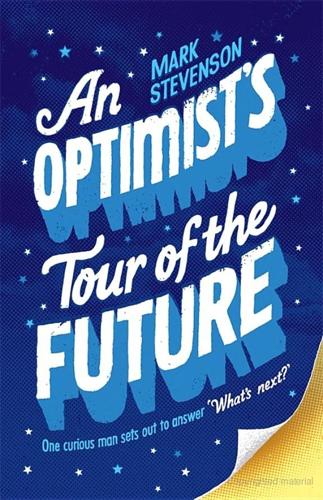
An Optimist's Tour of the Future
by
Mark Stevenson
Published 4 Dec 2010
To their credit, most transhumanists accept that ending ageing (if it’s possible) won’t arrive without massive upheavals to society. The question Aubrey de Grey asks is, ‘[Do the risks] outweigh the downside of doing the opposite, namely leaving ageing as it is … condemning a hundred thousand people a day to an unnecessarily early death? You know, if you haven’t got an argument that’s that strong then just don’t waste my time.’ For transhumanists this is a moral argument. On the issue of over-population Aubrey de Grey has written, ‘Basically our options are extremely simple: either restrict the birth rate or raise the death rate,’ by which he means if we all start living longer and keep to one planet, we’ll probably have to breed less.
…
He wrote: The human species can, if it wishes, transcend itself – not just sporadically, an individual here in one way, an individual there in another way – but in its entirety, as humanity. We need a name for this new belief. The term Huxley came up with was ‘Transhumanism’ – the idea that man could remain essentially human but transcend what nature had given him. Skip forward seventy-seven years to 2004 and you get Aubrey de Grey, a biogerontologist who declares, ‘I think the first person to live to a thousand might be sixty already.’ I’m travelling to see Nick because the debate around transhumanism is a car-crash of science, ethics and social policy. It asks us to rethink what medicine is, what society might look like and how far we should go with our technology.
…
Accordingly, I’m approaching the transhumanist project with a good dose of scepticism. I’m not the only one to be dubious. In 2006, fed up with what they perceived as a lot of media ‘bad science’ stirred up by the anti-ageing part of the transhumanist project, the MIT Technology Review offered a $10,000 prize to anyone who could demonstrate that Aubrey de Grey’s ideas and research were ‘unworthy of learned debate.’ Jason Pontin, the Technology Review editor had previously written a stinging profile of de Grey, characterising him as a shabby, beer-addicted troll and comparing his work to ‘science fiction.’ Not one to take offence, de Grey offered a further $10,000 prize money.

The Future Is Faster Than You Think: How Converging Technologies Are Transforming Business, Industries, and Our Lives
by
Peter H. Diamandis
and
Steven Kotler
Published 28 Jan 2020
Ray Kurzweil: Ray Kurzweil, author interview, 2018. See also this conversation between Peter and Ray where they discuss the concept of longevity escape velocity: https://www.youtube.com/watch?time_continue=2&v=SaOfLtoaKqw. Aubrey de Grey: Kira Peikoff, “Anti-Aging Pioneer Aubrey de Grey: ‘People in Middle Age Now Have a Fair Chance,’ ” Leapsmag, January 30, 2018. See: https://leapsmag.com/anti-aging-pioneer-aubrey-de-grey-people-middle-age-now-fair-chance/. The Anti-Aging Pharmacy Easter Island is remote: Joe Schwarz, “The Right Chemistry: Easter Island Might Just Hold the Key to Fighting Aging,” Montreal Gazette, March 5, 2019.
…
The old direction was our thirty-year lifespan, which held constant from the Paleolithic Age to the front end of the Industrial Revolution. During the twentieth century, marvels such as antibiotics, sanitation, and clean water extended our average age to forty-eight years by 1950, then to seventy-two years by 2014. But these days, Ray Kurzweil and longevity expert Aubrey de Grey have begun talking about “longevity escape velocity,” or the idea that soon, science will be able to extend our lives by a year for every year we live. In other words, once across this threshold, we’ll literally be staying one step ahead of death. Kurzweil thinks this threshold is about twelve years away, while de Grey puts it thirty years out.

Ageless: The New Science of Getting Older Without Getting Old
by
Andrew Steele
Published 24 Dec 2020
There have been several attempts to systematically classify theories of ageing, but two modern ones stand out because not only do they provide a classification system, but they do so explicitly to guide devising treatments for ageing. The first, originally published in 2002 and boldly entitled ‘Strategies for Engineered Negligible Senescence’ (SENS for short), was devised by maverick biogerontologist Aubrey de Grey. In its current form, SENS identifies seven differences between old bodies and young which de Grey suggests are the fundamental causes of ageing. It’s fair to say that it was, and remains, controversial. Because it was motivated specifically by treating ageing, his ‘seven deadly things’ are types of age-related ‘damage’ grouped because he envisages a type of treatment to tackle each one.
…
It’s currently struggling in the final phase of clinical trials, but initial success in cells, mice and rabbits suggests that, even if this particular formulation doesn’t work out in humans, there’s at least something to it. The idea of moving all the mitochondrial genes to the nucleus to combat mutations in ageing, rather than just one which is causing a specific mitochondrial disease, came from Aubrey de Grey, who we met in Chapter 4 as the father of ‘Strategies for Engineered Negligible Senescence’, or SENS. Accordingly, it’s his SENS Research Foundation that has got the furthest with this idea so far, successfully restoring function to cells in a dish with mitochondria missing two genes by providing them with a backup in the nucleus and, more recently, getting all 13 mitochondrially encoded genes working to varying degrees in the nucleus by optimising their genetic code.
…
Sci. 959, 452–62 (2002) ageless.link/boetg3 However, the classification has developed since then, and more recent versions can be found in Ben Zealley and Aubrey D. N. J. de Grey, ‘Strategies for engineered negligible senescence’, Gerontology 59, 183–9 (2013). DOI: 10.1159/000342197 ageless.link/ugcyxw or on the website of de Grey’s SENS Research Foundation: Intro to SENS research (SENS Research Foundation) ageless.link/owtoc3 or in his 2008 book Aubrey de Grey and Michael Rae, Ending Aging: The Rejuvenation Breakthroughs That Could Reverse Human Aging in Our Lifetime (St Martin’s Griffin, 2008) ageless.link/yvitd6 … the Hallmarks of Aging … López-Otín et al., 2013 ageless.link/m3gh76 1. Trouble in the double helix: DNA damage and mutations A good review of the evidence for DNA damage and mutations mattering in ageing can be found in Alex A.
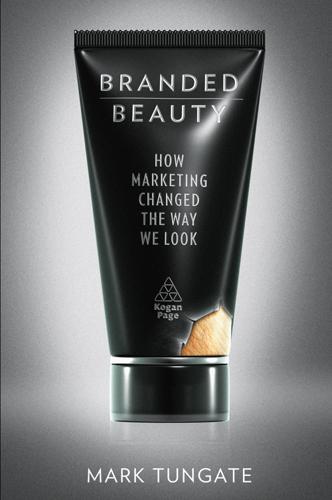
Branded Beauty
by
Mark Tungate
Published 11 Feb 2012
Others are not content to simply knock off early from work, rent a romantic comedy and break out the port and the olive oil. The quest for immortality is a serious business. A number of doctors, scientists and futurists have published books on the subject, popping up regularly on the conference circuit to share their theories. Leading the charge is Aubrey de Grey, who at least has the right name for the job. Identifiable by a beard that would make Methuselah bristle with envy, de Grey is a maverick Cambridge-educated researcher who insists that ageing is not inevitable. He is convinced that it is possible to identify the components that cause human tissue to age – and fix them.
…
The only difference between my work and the work of the whole medical profession is that I think we’re in striking distance of keeping people so healthy that at 90 they’ll carry on waking up in the same physical state as they were at the age of 30, and their probability of not waking up one morning will be no higher than it was at the age of 30. (‘Aubrey de Grey: We don’t have to get sick as we get older’, 1 August 2010) Also noteworthy is the amount of publicity that de Grey’s ‘non-scientific’ research has generated. As he puts it, ‘Most scientists will get serious media exposure about twice in their entire career. And they’ll get that because they’ve actually done an experiment that was interesting.
…
Rather than a master–slave relationship, Kurzweil envisages the singularity as a partnership. Humans will integrate computers into their own bodies, forming hybrid beings that will naturally live longer than their purely biological forebears. Artificial intelligence will extend the abilities of our brains. Nanocomputers will work away inside us busily repairing what Aubrey de Grey describes as the ‘damage’ of ageing. Kurzweil predicts that by the early 2030s, most of our fallible internal organs will have been replaced by tiny robots. We’ll have ‘eliminated the heart, lungs, red and white blood cells, platelets, pancreas, thyroid and all the hormone-producing organs, kidneys, bladder, liver, lower esophagus, stomach, small intestines, large intestines, and bowel.

The Singularity Is Nearer: When We Merge with AI
by
Ray Kurzweil
Published 25 Jun 2024
(Cham, Switzerland: Springer, 2020): 72–82, https://link.springer.com/content/pdf/10.1007/978-3-030-49970-9.pdf?pdf=button. BACK TO NOTE REFERENCE 97 “Aubrey De Grey—Living to 1,000 Years Old,” Aging Reversed, YouTube video, May 26, 2018, https://www.youtube.com/watch?v=ZkMPZ8obByw; “One-on-One: An Investigative Interview with Aubrey de Grey—44th St. Gallen Symposium,” StGallenSymposium, YouTube video, May 8, 2014, https://www.youtube.com/watch?v=DkBfT_EPBIo; “Aubrey de Grey, PhD: ‘The Science of Curing Aging,’ ” Talks at Google, YouTube video, January 4, 2018, https://www.youtube.com/watch?v=S6ARUQ5LoUo. BACK TO NOTE REFERENCE 98 “A Reimagined Research Strategy for Aging,” SENS Research Foundation, accessed December 27, 2022, https://web.archive.org/web/20221118080039/https://www.sens.org/our-research/intro-to-sens-research.
…
These often seem to happen spontaneously—not as a result of lifestyle factors or any disease onset. The body apparently just starts breaking down. Over the past decade, scientists and investors have started giving much more serious attention to finding out why. One of the leading researchers in this field is biogerontologist Aubrey de Grey, founder of the LEV (Longevity Escape Velocity) foundation.[98] As de Grey explains, aging is like the wear on the engine of an automobile—it is damage that accumulates as a result of the system’s normal operation. In the human body’s case, that damage largely comes from a combination of cellular metabolism (using energy to stay alive) and cellular reproduction (mechanisms for self-replication).
…
And we don’t need to wait until these technologies are fully mature in order to benefit. If you can live long enough for anti-aging research to start adding at least one year to your remaining life expectancy annually, that will buy enough time for nanomedicine to cure any remaining facets of aging. This is longevity escape velocity.[100] This is why there is sound logic behind Aubrey de Grey’s sensational declaration that the first person to live to 1,000 years has likely already been born. If the nanotechnology of 2050 solves enough issues of aging for 100-year-olds to start living to 150, we’ll then have until 2100 to solve whatever new problems may crop up at that age. With AI playing a key role in research by then, progress during that time will be exponential.

The Transhumanist Reader
by
Max More
and
Natasha Vita-More
Published 4 Mar 2013
Andy Clark, PhD, is Professor and Chair in Logic and Metaphysics, University of Edinburgh. He authored Supersizing the Mind: Embodiment, Action, and Cognitive Extension (Oxford University Press, 2010); Natural Born Cyborgs: Minds, Technologies, and the Future of Human (2003); and Intelligence Mindware (Oxford University Press, 2000). Aubrey de Grey, PhD, is Chief Science Officer, Strategies for Engineered Negligible Senescence Foundation. He co-authored with Michael Rae Ending Aging: The Rejuvenation Breakthroughs that Could Reverse Human Aging in Our Lifetime (St. Martin’s Griffin, 2008); and “Combating the Tithonus Error: What Works?” (Rejuvenation Research 11, 2008).
…
At that time, my boldness attracted headlines and radio interviewers from around the world. Now the basic idea has become commonplace, virtually an internet advertising-copy cliché for the promotion of nutritional supplements that can be bought online, to say nothing of the excellent agit-prop for ending aging supplied by the relentless Aubrey de Grey over the last few years. The single best warrant for such chatter has been the creation of laboratory animals with greatly extended lifespans. I was one of the first to achieve this feat, back in the 1970s, but many more have since. Now there is nothing unusual about labs that have some kind of Methuselah flies or Methuselah worms or Methuselah mice.
…
Interestingly, even the many millions who believe in an indefinite life after death through religious and spiritual processes rail against the quest to achieve superlongevity here in the world we experience and know exists. Critics of life extension invariably exhume a few of the same arguments over and over again. Among these are the overpopulation, resources, boredom, and meaninglessness arguments. The essays in Part V address varied aspects and implications of radically extended lifespans. Aubrey de Grey critically analyses pro-mortality arguments by leading critics Leon Kass and William Hurlbut. Despite disagreeing with Kass’s conclusion, de Grey has a degree of sympathy for basing moral judgments on feelings. However, thinking about those feelings critically should lead to the view that life is good and death is bad and the more life the better, so long as we and those we care about remain healthy.

50 Future Ideas You Really Need to Know
by
Richard Watson
Published 5 Nov 2013
This sounds incredible, but there’s a serious possibility that by the end of this century, and possibly a lot sooner, human beings will be able to regrow lost limbs. “I think that given sufficient funding we have a 50/50 chance of completely stopping people from dying of old age within about 25 or 30 years from now.” Aubrey de Grey, gerontology theoretician and author Our aging population As we’ve already seen, the growth in the world’s population over the past 100 years or so has not been caused by people having lots of sex, but the fact that we haven’t been dying as young or as frequently as we used to. In other words, population growth is intimately linked with healthcare and associated areas such as diet and lifestyle.
…
This finding is likely to result in various “fast repair” products for older people in the future. What’s possible? In the more optimistic corner, are those who believe that aging is genetically determined and that the “death program” or process that causes aging can be switched off, or at least amended. Aubrey de Grey, editor of Rejuvenation magazine and cofounder of rejuvenation research organization the SENS Foundation, has even suggested that there is no scientific reason why human beings cannot live to 1,000. He has even suggested that this person may even be alive right now. On the face of it, this is a very exciting idea.

The Economic Singularity: Artificial Intelligence and the Death of Capitalism
by
Calum Chace
Published 17 Jul 2016
The advance of automation, described with great care and accuracy in this book, will almost certainly constitute the substrate within which all other technological developments – be they biomedical, environmental or something else entirely – will occur, and thus within which they should be discussed as regards their value to humanity. Read "The Economic Singularity" if you want to think intelligently about the future. Aubrey de Grey – CSO of SENS Research Foundation; former AI researcher Following his insightful foray into the burgeoning AI revolution and associated existential risks, Calum focuses his attention on a nearer term challenge – the likelihood that intelligent machines will render much of humanity unemployable in the foreseeable future.
…
Acknowledgements I am enormously grateful to the following people, who have given their time and energy to support this book, and in many cases to provide constructive criticism on its earlier drafts. I have learned a lot from their insights, and the book is much better for them. All errors, omissions and solecisms are of course my fault, not theirs. Adam Jolly, Adam Singer, Aubrey de Grey, Ben Medlock, Ben Goldsmith, Chris Meyer, Clive Tinder, David Wood, Gerald Huff, Hugo de Garis, Jeff Pinsker, Jim Muttram, Justin Stewart, Kenneth Cukier, Malcolm Myers, Peter Fenton O'Creevy, Peter Monk, Randal Koene, Roman Yampolskiy, Stuart Armstrong, Will Gilpin, William Charlwood, William Graham.
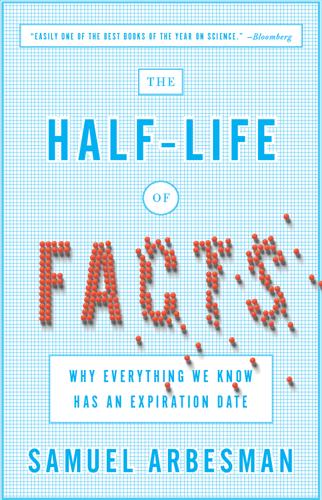
The Half-Life of Facts: Why Everything We Know Has an Expiration Date
by
Samuel Arbesman
Published 31 Aug 2012
What this means is that when we are adding more than one year per year, we can effectively live forever. Let me stress this again: A slight change of the underlying state of affairs in our technological and medical abilities—facts about the world around us—can allow people to be essentially immortal. The phrase actuarial escape velocity was popularized by Aubrey de Grey, a magnificently bearded scientist obsessed with immortality. Aubrey de Grey has made the realization of this actuarial escape velocity his life’s work. We’re at least several decades from this, according to even the most optimistic and starry-eyed of estimates. And it might very well never happen. But this sort of simple back-of-the-envelope calculation can teach us something: Not only can knowledge change rapidly based on technology, but it can happen so rapidly that it can produce other drastically rapid changes in knowledge.

12 Bytes: How We Got Here. Where We Might Go Next
by
Jeanette Winterson
Published 15 Mar 2021
Machines use time differently to humans. Computers are not time-bound. As biological beings, humans are subject to time, most importantly our allotted span: we die. And we hate it. One of the near-future breakthroughs humans can expect is to live longer, healthier lives, perhaps much longer, even 1,000-year lives, if AI biologist Aubrey de Grey is right. Rejuvenation biotechnology will aim to slow down the accumulation of ageing damage in our organs and tissues, as well as repairing or replacing what is no longer fit for purpose. More life into a time without boundaries. And if that doesn’t work there is always the possibility of brain upload, where the contents of your brain are transferred to another platform – initially not made of meat.
…
* * * In 2013, Silicon Valley hedge-fund manager Joon Yun set up the Palo Alto Longevity Prize, offering a $1 million prize to anyone who could hack the code of life and cure ageing. Google has created an entire company dedicated to life extension: Calico (short for California Life Company). Its aim is to reverse-engineer biology to increase both lifespan and healthspan. British computer scientist and biology PhD Aubrey de Grey runs his own not-for-profit organisation SENS (Strategies for Engineered Negligible Senescence). SENS researches new therapies to repair cellular and molecular damage. PayPal founder Peter Thiel contributes $600,000 a year to SENS, but de Grey used a multimillion-pound inheritance of his own to get things going.
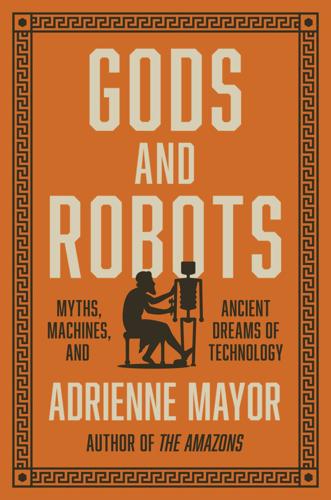
Gods and Robots: Myths, Machines, and Ancient Dreams of Technology
by
Adrienne Mayor
Published 27 Nov 2018
A senescent Tithonus, a pitiful shadow of a man isolated by dementia, is attended by young Eos in a haunting poem by Alicia E. Stallings (“Tithonus,” Archaic Smile, 1999). This depressing myth about the “horror of aging” would have been forgotten thousands of years ago if the message did not somehow give people subconscious comfort about the inevitability of death, declares Aubrey de Grey, a gerontologist who seeks limitless rejuvenation through futuristic science.23 In the Homeric imagination, gods and goddesses remained youthful and vital forever because of their special diet. They were sustained by ambrosia and nectar, which produced ethereal ichor instead of blood. Ambrosia (the term derives from a Sanskrit word for “undying”) was also a protective and rejuvenating body lotion used by goddesses (Homer Iliad 14.170).
…
This fact is recognized by scientists as the “Tithonus dilemma,” namely, the consequences of longevity without health and vigor. The dilemma plagues the project of keeping people alive indefinitely without their bodies and brains succumbing to age and cellular decay, like Eos’s tragic lover in the myth. Aubrey de Grey believes that modern humans need to overcome what he calls the “Tithonus error,” the humble acquiescence to aging and death. To counter the Tithonus dilemma, he founded SENS (Strategies for Engineered Negligible Senescence) Research Foundation in 2009, with the mission of supporting scientific innovations to bypass or switch off the natural decrepitude of cells as death is increasingly postponed.
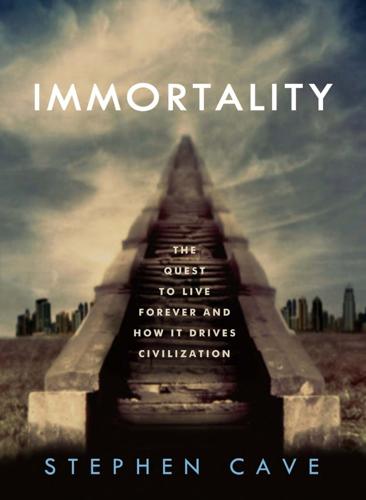
Immortality: The Quest to Live Forever and How It Drives Civilization
by
Stephen Cave
Published 2 Apr 2012
And in this time, we could be developing the technology that could buy us yet more decades; and in those decades, we could then achieve the breakthroughs that would give us another century—and so on, until the discovery is made that can grant us medical immortality. This is what the optimistic transhumanists describe as achieving “longevity escape velocity,” or living long enough to live forever. THE transhumanists have various strategies for breaking down the problems of mortality into manageable chunks. One prominent advocate, the gerontologist Aubrey de Grey, has suggested that there are exactly seven problems that must—and can—be solved for humans to achieve indefinite youth. They are summed up in his “Strategies for Engineered Negligible Senescence” (“senescence” being a term for the deterioration caused by aging), a paradigmatic example of the Engineering Approach to immortality.
…
Ivan Illich’s pathbreaking account of the spread of “medicalization” can be found in his book Medical Nemesis: The Expropriation of Health (Pelican Books, 1975). The Zygmunt Bauman quotes are from his aforementioned Mortality, Immortality, and Other Life Strategies. The seekers of medical immortality are well represented by the gerontologist Aubrey de Grey, whose book Ending Aging: The Rejuvenation Breakthroughs That Could Reverse Human Aging in Our Lifetime (St. Martin’s Griffin, 2008, written with his assistant Michael Rae) details his Engineering Approach to defeating aging. Another enthusiastic and readable immortalist is Ray Kurzweil, as reflected in his many books and articles on the subject, most notably Fantastic Voyage: Living Long Enough to Live Forever (with Terry Grossman, Rodale, 2004), Transcend: Nine Steps to Living Well Forever (also with Terry Grossman, Rodale, 2009) and The Singularity Is Near: When Humans Transcend Biology (Viking, 2005).
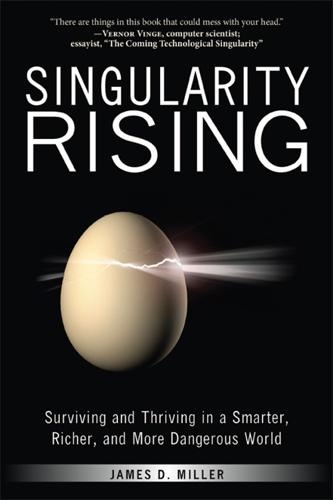
Singularity Rising: Surviving and Thriving in a Smarter, Richer, and More Dangerous World
by
James D. Miller
Published 14 Jun 2012
—Luke Muehlhauser, executive director, Singularity Institute “We’ve waited too long for a thorough, articulate, general-audience account of modern thinking on exponentially increasing machine intelligence and its risks and rewards for humanity. Miller provides exactly that, and I hope and expect that his book will greatly raise the quality of debate and research in this critical area.” —Aubrey de Grey, leading biomedical gerontologist; former AI researcher “How can we be intelligent about superintelligence? Its finessed agility steers its course through the terrain of analytics and into the salty basin of awareness. It is wise. It is a nonpartisan player. It flirts freely with friendliness.
…
These include: •Peter Thiel—self-made tech billionaire and key financier behind Face-book. Donated $1.1 million to the Institute;91 •Ray Kurzweil—famed investor and Singularity writer; •Justin Rattner—Intel’s chief technology officer; •Eric Drexler—the father of nanotechnology; •Peter Norvig—Director of Research at Google; •Aubrey de Grey—leading longevity researcher; •Stephen Wolfram—developer of the computation platform Mathematica; and •Jaan Tallinn—founding engineer of Skype and self-made tech decamillionaire who donated $100,000.92 I also spoke on the economics of the Singularity at the Institute’s 2008 Summit. Given the superficial bizarreness of some of Eliezer’s beliefs (e.g., that an intelligence explosion could create an ultra-AI), the support he receives from these men is impressive.

Is the Internet Changing the Way You Think?: The Net's Impact on Our Minds and Future
by
John Brockman
Published 18 Jan 2011
Taleb Calling You on Your Crap: Sean Carroll How I Think About How I Think: Lera Boroditsky I Am Not Exactly a Thinking Person— I Am a Poet: Jonas Mekas Kayaks Versus Canoes: George Dyson The Upload Has Begun: Sam Harris Hell if I Know: Gregory Paul What I Notice: Brian Eno It’s Not What You Know, It’s What You Can Find Out: Marissa Mayer When I’m on the Net, I Start to Think: Ai Weiwei The Internet Has Become Boring: Andrian Kreye The Dumb Butler: Joshua Greene Finding Stuff Remains a Challenge: Philip Campbell Attention, Crap Detection, and Network Awareness: Howard Rheingold Information Metabolism: Esther Dyson Ctrl + Click to Follow Link: George Church Replacing Experience with Facsimile: Eric Fischl and April Gornik Outsourcing the Mind: Gerd Gigerenzer A Prehistorian’s Perspective: Timothy Taylor The Fourth Phase of Homo sapiens: Scott Atran Transience Is Now Permanence: Douglas Coupland A Return to the Scarlet-Letter Savanna: Jesse Bering Take Love: Helen Fisher Internet Mating Strategies: David M. Buss Internet Society: Robert R. Provine Don’t Ring Me: Aubrey de Grey A Thousand Hours a Year: Simon Baron-Cohen Thinking Like the Internet, Thinking Like Biology: Nigel Goldenfeld The Internet Makes Me Think in the Present Tense: Douglas Rushkoff Social Prosthetic Systems: Stephen M. Kosslyn Evolving a Global Brain: W. Tecumseh Fitch Search and Emergence: Rudy Rucker My Fingers Have Become Part of My Brain: James O’Donnell A Mirror for the World’s Foibles: John Markoff a completely new form of sense: Terence Koh By Changing My Behavior: Seirian Sumner There Is No New Self: Nicholas A.
…
It gives immediate, constant contact with select, distant conversants; can tell you where you are, where you should go next, and how to get there; provides diversions while waiting; and can document your journey with text, snaps, and video images. For some, this is enhanced reality, but it comes at the price of the here and now. Whatever your opinion and level of engagement, the cell phone and related Internet devices are profound social prostheses—almost brain implants—that have changed our lives and culture. Don’t Ring Me Aubrey de Grey Gerontologist; chief science officer, SENS Foundation; author (with Michael Rae), Ending Aging The Net changes the way I think in a bunch of ways that apply to more or less everyone, and especially to Edge question respondents, but there’s one effect it has on me that is probably rarer. And it’s not a change but an avoidance of a change.

This Will Make You Smarter: 150 New Scientific Concepts to Improve Your Thinking
by
John Brockman
Published 14 Feb 2012
Daniel Kahneman The Focusing Illusion The mismatch in the allocation of attention between thinking about a life condition and actually living it is the cause of the focusing illusion. Carlo Rovelli The Uselessness of Certainty The very foundation of science is to keep the door open to doubt. Lawrence Krauss Uncertainty In the public parlance, uncertainty is a bad thing, implying a lack of rigor and predictability. Aubrey de Grey A Sense of Proportion About Fear of the Unknown Fear of the unknown is not remotely irrational in principle . . . but it can be and generally is overdone. Nigel Goldenfeld Because Complex systems, such as financial markets or the Earth’s biosphere, do not seem to obey causality.
…
So, too, in the public sphere. Public policy performed in the absence of understanding quantitative uncertainties, or even absent understanding the difficulty of obtaining reliable estimates of uncertainties, usually means bad public policy. A Sense of Proportion About Fear of the Unknown Aubrey de Grey Gerontologist; chief science officer, SENS Foundation; coauthor (with Michael Rae), Ending Aging Einstein ranks extremely high not only among the all-time practitioners of science but also among the producers of aphorisms that place science in its real-world context. One of my favorites is “If we knew what we were doing, it wouldn’t be called research.”

Boom: Bubbles and the End of Stagnation
by
Byrne Hobart
and
Tobias Huber
Published 29 Oct 2024
Neuralink, for example, has already started to develop brain-machine interfaces that can be implemented to achieve a true symbiosis between man and machine. And many startups and research labs, such as Silicon Valley’s SENS Research Foundation, are attempting to conquer death by hacking into the fundamental biological and molecular mechanisms of aging to reach, as leading senescence researcher Aubrey De Grey puts it, “longevity escape velocity.” 379 Whether through cyborgs, robots, or software, these scientific fields converge on the perennial theme of the immortality of the soul. While the concept of an eternal soul seems to clash with the materialism of the natural sciences, AI historian Daniel Crevier argues that the apparent contradiction is compatible with the Judeo-Christian tradition.
…
Virginia Heffernan, “I Saw the Face of God in a Semiconductor Factory,” Wired, March 21, 2023, https://www.wired.com/story/i-saw-the-face-of-god-in-a-tsmc-factory/. 375 Nick Bostrom, Superintelligence: Paths, Dangers, Strategies (Oxford: Oxford University Press, 2014). 376 1 Corinthians, 15:51. 377 Alan Turing, “Computing Machines and Intelligence,” in Computers and Thought, ed. Edward Feigenbaum (New York: McGraw-Hill, 1963), 21. 378 Kurzweil, The Age of Spiritual Machines: When Computers Exceed Human Intelligence (New York: Penguin, 2000). 379 Aubrey de Grey, “Escape Velocity: Why the Prospect of Extreme Human Life Extension Matters Now,” PLOS Biology 2, no. 6: 723–726, doi:10.1371/journal.pbio.0020187. 380 Daniel Crevier, AI: The Tumultuous History of the Search for Artificial Intelligence (New York: Basic Books, 1993). See also Ian G. Barbour, Religion and Science: Historical and Contemporary Issues (San Francisco: HarperCollins, 1997). 381 For accounts on Christian eschatology, see Wolfhart Pannenberg, Theology and the Kingdom of God (Philadelphia: The Westminster Press, 1977) and Jürgen Moltmann, The Coming of God: Christian Eschatology (Minneapolis, MN: Fortress Press, 1996). 382 Noble, The Religion of Technology, 189. 383 Monika Gisler, Didier Sornette, and Ryan Woodard, “Innovation as a Social Bubble: The Example of the Human Genome Project,” Research Policy 40 (2011): 1412–1425. 384 Robert L.
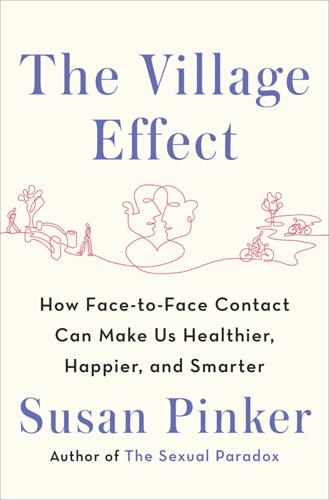
The Village Effect: How Face-To-Face Contact Can Make Us Healthier, Happier, and Smarter
by
Susan Pinker
Published 30 Sep 2013
Zia Teresa Cabiddu died in January 2013, at the age of 101. Sadly, she did not live long enough to see her name and life story in print. 11. Luisa Salaris, “Sardinian Centenarians: A Lesson from the Past?” paper presented at the International Symposium on Global Longevity, Sunchang, South Korea, 2008. 12. According to Aubrey de Grey, among other prominent scientists working in the area of human aging, animal models clearly suggest that deprivation—specifically, reducing calorie intake—will reduce cell damage and, as a result, aging. “If you feed rodents (or, in fact, a wide variety of other animals) a bit less than they would like, they tend to live longer than if they have as much food as they want.
…
“If you feed rodents (or, in fact, a wide variety of other animals) a bit less than they would like, they tend to live longer than if they have as much food as they want. This is not simply because such animals tend to overeat given the chance and become obese: animals that ‘eat sensibly’ and maintain a constant body weight throughout most of their lives still live less long than those given less food.” Aubrey de Grey and Michael Rae, Ending Aging: The Rejuvenation Breakthroughs that Could Reverse Human Aging in Our Lifetime (New York: St. Martin’s Press, 2007), 24. See also J. F. Trepanowski et al., “Impact of Caloric and Dietary Restriction Regimens on Markers of Health and Longevity in Humans and Animals: A Summary of Available Findings,” Nutrition Journal 10 (2011).

What to Think About Machines That Think: Today's Leading Thinkers on the Age of Machine Intelligence
by
John Brockman
Published 5 Oct 2015
BART KOSKO Thinking Machines = Old Algorithms on Faster Computers JULIA CLARKE The Disadvantages of Metaphor MICHAEL MCCULLOUGH A Universal Basis for Human Dignity HAIM HARARI Thinking About People Who Think Like Machines HANS HALVORSON Metathinking CHRISTINE FINN The Value of Anticipation DIRK HELBING An Ecosystem of Ideas JOHN TOOBY The Iron Law of Intelligence MAXIMILIAN SCHICH Thought-Stealing Machines SATYAJIT DAS Unintended Consequences ROBERT SAPOLSKY It Depends ATHENA VOULOUMANOS Will Machines Do Our Thinking for Us? BRIAN CHRISTIAN Sorry to Bother You BENJAMIN K. BERGEN Moral Machines LAURENCE C. SMITH After the Plug Is Pulled GIULIO BOCCALETTI Monitoring and Managing the Planet IAN BOGOST Panexperientialism AUBREY DE GREY When Is a Minion Not a Minion? MICHAEL I. NORTON Not Buggy Enough THOMAS A. BASS More Funk, More Soul, More Poetry and Art HANS ULRICH OBRIST The Future Is Blocked to Us KOO JEONG-A An Immaterial Thinkable Machine RICHARD FOREMAN Baffled and Obsessed RICHARD H. THALER Who’s Afraid of Artificial Intelligence?
…
If the purpose of thinking about machines like AIs and robots and computers is in part to struggle with the question of what living with them as neighbors and companions and even citizens might look like, then we ought to start by taking more seriously all the machines already around us that could be said to have taken on those roles and which we nevertheless ignore. WHEN IS A MINION NOT A MINION? AUBREY DE GREY Gerontologist; chief science officer, SENS Foundation; author, Ending Aging If asked to rank humanity’s problems by severity, I would give the silver medal to the need to spend so much time doing things that give us no fulfillment—work, in a word. I consider that the ultimate goal of artificial intelligence is to hand off this burden, to robots that have enough common sense to perform those tasks with minimal supervision.

The Optimist: Sam Altman, OpenAI, and the Race to Invent the Future
by
Keach Hagey
Published 19 May 2025
In 2005, Thiel started funding Yudkowsky’s Singularity Institute, and the following year they teamed up with Ray Kurzweil—whose book The Singularity Is Near had become a bestseller—to create the Singularity Summit at Stanford University. Over the next six years, it expanded to become a prominent forum for futurists, transhumanists, Extropians, AI researchers, and science fiction authors, including Bostrom, More, Hanson, Stanford AI professor Sebastian Thrun, XPRIZE founder Peter Diamandis, and Aubrey de Grey, a gerontologist who claims humans can eventually defeat aging. Skype co-founder Jaan Tallinn, who participated in the summit, was inspired by Yudkowsky to become one of the primary funders of research dedicated to reducing existential risk from AI, including by initially giving money to OpenAI and later switching to fund OpenAI’s rival, Anthropic.
…
That interview, along with later-denied reports that he was interested in a startup that sold transfusions of young people’s plasma to older patients for $8,000 a pop, helped fuel the meme that he was an “internet vampire,” a caricature that solidified after the HBO satire Silicon Valley portrayed a Thiel-like CEO taking a meeting while hooked up to his younger “transfusion associate.” (Even if Thiel did not kick the tires at Ambrosia, he has long proclaimed that he intends to fight death, and has given millions to the research of Aubrey de Grey, the Cambridge-educated gerontologist known for his Rasputin beard, fondness for beer, and insistence that aging is a disease that can be cured.) In 2020, new research suggested the fountain of youth might not be about young blood at all so much as the absence of old blood. Simply diluting old blood with saline and albumin was enough to get some of the same effects.

The Contrarian: Peter Thiel and Silicon Valley's Pursuit of Power
by
Max Chafkin
Published 14 Sep 2021
He threw himself more deeply into another interest, funding technologies and research that might allow him to live forever. He continued to put money into the Methuselah Foundation and a spinoff, the SENS Research Foundation, which was dedicated to anti-aging research. The two organizations had been created by Aubrey de Grey, a Cambridge-trained academic with a wild beard, who’d given a TED Talk in 2005 that suggested old age could be reversed. Thiel donated more than $1 million in 2007 and 2008, and another $2 million in 2010. In 2008, Founders Fund had invested around $500,000 into Halcyon Molecular, a startup founded by William Andregg, who’d started the company with his brother Michael when he was just nineteen, with a modest plan of developing inexpensive genomic sequencing technology in order to cure aging.
…
Then he stopped, mid-sentence, and brought up the rumors. “By the way, true or not true?” Thiel smirked, and started waving his hand. “I’m not even sure what I’m supposed to say,” he began. “I want to publicly tell you I’m not a vampire.” The 2016 mouse study did have a Thiel connection. It had been funded by SENS, the nonprofit founded by Aubrey de Grey and backed by Thiel. The lab, which I visited in early 2020, just before the lockdown, was functional, if not fancy—a one-story office building next to a freeway interchange outside of Mountain View, California. De Grey had a Rip Van Winkle beard and had been working out of a cramped office just off the lab, with an overflowing bookshelf and a bicycle propped up against the wall.

The Singularity Is Near: When Humans Transcend Biology
by
Ray Kurzweil
Published 14 Jul 2005
Already, new drug development is precisely targeting key steps in the process of atherosclerosis (the cause of heart disease), cancerous tumor formation, and the metabolic processes underlying each major disease and aging process. Can We Really Live Forever? An energetic and insightful advocate of stopping the aging process by changing the information processes underlying biology is Aubrey de Grey, a scientist in the department of genetics at Cambridge University. De Grey uses the metaphor of maintaining a house. How long does a house last? The answer obviously depends on how well you take care of it. If you do nothing, the roof will spring a leak before long, water and the elements will invade, and eventually the house will disintegrate.
…
You give a talk on this, and someone stands up in back and says, "hang on, if we do that we're going to have a population explosion!" If you reply, "No, everything will be fine because we'll all wear these absurd rubber things when we have sex," nobody would have taken you seriously. Yet that's just what happened—barrier contraception was widely adopted [around the time that infant mortality dropped]. —AUBREY DE GREY, GERONTOLOGIST We have a duty to die. —DICK LAMM, FORMER GOVERNOR OF COLORADO Some of us think this is rather a pity. —BERTRAND RUSSEL, 1955, COMMENTING ON THE STATISTIC THAT ABOUT ONE HUNDRED THOUSAND PEOPLE DIE OF AGE-RELATED CAUSES EVERY DAY38 Evolution, the process that produced humanity, possesses only one goal: create gene machines maximally capable of producing copies of themselves.
…
Freitas Jr., Nanomedicine, vol. 1, Basic Capabilities, section 7.3, "Communication Networks" (Georgetown, Tex.: Landes Bioscience, 1999), pp. 186–88, http://www.nanomedicine.com/NMI/7.3.htm. 37. Allen Kurzweil, The Grand Complication: A Novel (New York: Hyperion, 2002); Allen Kurzweil, A Case of Curiosities (New York: Harvest Books, 2001). Allen Kurzweil is my first cousin. 38. As quoted in Aubrey de Grey, "Engineering Negligible Senescence: Rational Design of Feasible, Comprehensive Rejuvenation Biotechnology," Kronos Institute Seminar Series, February 8, 2002. PowerPoint presentation available at http://www.gen.cam.ac.uk/sens/sensov.ppt. 39. Robert A. Freitas Jr., "Death Is an Outrage!" presentation at the fifth Alcor Conference on Extreme Life Extension, Newport Beach, Calif., November 16, 2002, http://www.rfreitas.com/Nano/DeathIsAnOutrage.htm, published on KurzweilAI.net January 9, 2003: http://www.KurzweilAI.net/articles/art0536.html. 40.
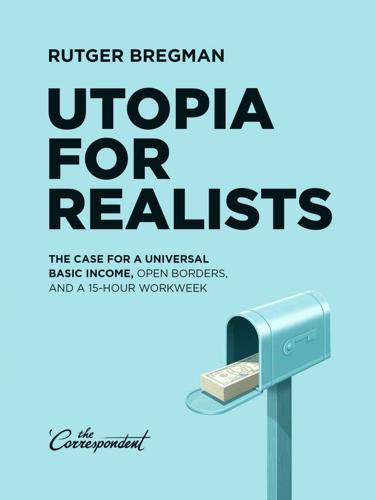
Utopia for Realists: The Case for a Universal Basic Income, Open Borders, and a 15-Hour Workweek
by
Rutger Bregman
Published 13 Sep 2014
Bjørn Lomborg, “Setting the Right Global Goals,” Project Syndicate (May 20, 2014). https://www.project-syndicate.org/commentary/bj-rn-lomborg-identifies-the-areas-in-which-increased-development-spending-can-do-the-most-good 15. One is Audrey de Grey of Cambridge University, who gave a TED Talk on this topic: http://www.ted.com/talks/aubrey_de_grey_says_we_can_avoid_aging 16. Peter F. Orazem, “Challenge Paper: Education,” Copenhagen Consensus Center (April 2014). http://copenhagenconsensus.com/publication/education 17. “Where have all the burglars gone?” The Economist (July 18, 2013). http://www.economist.com/news/briefing/21582041-rich-world-seeing-less-and-less-crime-even-face-high-unemployment-and-economic 18.

Fully Automated Luxury Communism
by
Aaron Bastani
Published 10 Jun 2019
‘World Population Projected to Reach 9.6 Billion by 2050’. UN News, 13 June 2013. Ageing in Britain: Austerity beyond Austerity ‘Dementia Now Leading Cause of Death’. BBC News, 14 November 2016. Gallagher, James. ‘Dementia Cases “Set to Treble Worldwide” by 2050’. BBC News, 5 December 2013. Lain, Douglas. Advancing Conversations: Aubrey De Grey – Advocate for An Indefinite Human Lifespan. Zero Books, 2016. Marcus, Mary Brophy. ‘The Top 10 Leading Causes of Death in the US’. CBS News, 30 June 2016. (Genetic) Information Wants to Be Free ‘An Overview of the Human Genome Project’. National Human Genome Research Institute, November 8, 2012.

How Much Is Enough?: Money and the Good Life
by
Robert Skidelsky
and
Edward Skidelsky
Published 18 Jun 2012
* Aristotle famously said that “it is the mark of an educated person to look for precision in each kind of enquiry just to the extent that the nature of the subject allows it” (Aristotle, Nicomachean Ethics, tr. Christophe Rowe and Sarah Broadie [Oxford: Oxford University Press, 2002], p. 96). In a similar spirit, Keynes is alleged to have said, “it is better to be roughly right than precisely wrong.” * The gerontologist Aubrey de Grey has claimed that we will very soon be able to enjoy thousands of years of good health. Guy Brown, a Cambridge neuroscientist, sounds a more sober note. “We are adding years to life,” he writes, “but they are poor quality years at the extremity of life” (Guy Brown, “No Way to Go,” Guardian, November 13, 2007).
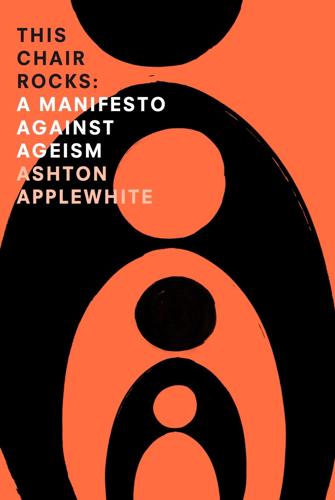
This Chair Rocks: A Manifiesto Against Ageism
by
Ashton Applewhite
Published 10 Feb 2016
Leading the pack are the proponents of radical life extension who think that advances in biotechnology will soon be able to slow down or turn back the biological clock, and that my generation can anticipate living far longer than our parents. Many proponents believe that what biomedical researcher Aubrey de Grey calls “longevity escape velocity” is within reach: the point at which, for every year that passes, life expectancy will increase by one year, making lifespans infinite. The last century’s unprecedented increase in human lifespan does indeed put us on new evolutionary footing. When Dutch gerontologist Dr.
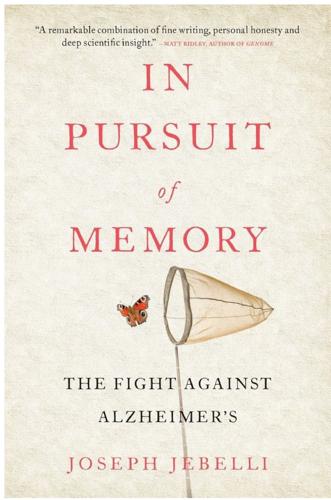
In Pursuit of Memory: The Fight Against Alzheimer's
by
Joseph Jebelli
Published 30 Oct 2017
He also spoke about a substance found in the soil of Easter Island by Canadian scientists in 1964, called Rapamycin, which has been shown to extend the lifespan of mice by 14 per cent.8 Amid all these arresting developments, though, Nikolich stressed a crucial message: the mission, he said, is extended healthspan, not lifespan. Because even if we all live to 150, ‘nobody wants to live long as a vegetable,’ he bluntly concluded. But some believe this is a false dichotomy. Aubrey de Grey, an eccentric computer scientist and gerontologist at Cambridge University, thinks the only way to extend healthspan is by radically extending human lifespan. Repairing the molecular damage of ageing, he claims, should eventually allow us to live healthy lives well into our hundreds if not thousands.

Live Work Work Work Die: A Journey Into the Savage Heart of Silicon Valley
by
Corey Pein
Published 23 Apr 2018
The billionaire was, for example, among the most important clients of an outfit called the Alcor Life Extension Foundation, which promised to freeze the dead for later resuscitation. Max More, an Alcor employee and self-proclaimed guru of “extropian” futurism, had given a presentation on “cryonics as a bridge to an indefinitely extended life” at the same BIL conference where Thiel donee Curtis Yarvin appeared. The bearded British life extension researcher Aubrey de Grey spoke at BIL that year about his work in “anti-aging bioscience.” De Grey whiled away most of his days at the Thiel-funded, Mountain View–based SENS Research Foundation, a nonprofit organization also dedicated to the quixotic cause of achieving human immortality. Yarvin booster Patri Friedman led an organization called the Seasteading Institute, which was also funded by Thiel, with the outlandish goal of building privately owned countries on large offshore platforms.

Life After Google: The Fall of Big Data and the Rise of the Blockchain Economy
by
George Gilder
Published 16 Jul 2018
For every obsolescent homo sapiens, the leading Silicon Valley magnates recommend a federally guaranteed annual income. That’s right, “free money” every year! In addition, you, a sophisticated cyber-savvy reader, may well be among the exceptional elites who, according to such certifiable geniuses as Larry Page and Aubrey de Grey, might incrementally live unemployed forever. You may even count yourselves among the big data demiurges who ascend to become near-divinities. How about that? As Google Search becomes virtually omniscient, commanding powers that previous human tribes ascribed to the gods, you may become a homo deus.
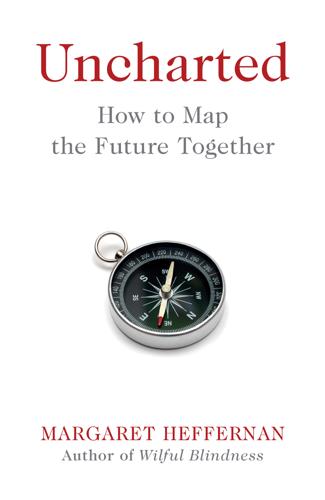
Uncharted: How to Map the Future
by
Margaret Heffernan
Published 20 Feb 2020
Where recent academic research has concluded that longevity plateaus at around 115 years, they insist that we will soon be able to eliminate death altogether. (Predictions vary from 20 to 100 years, a safe margin for error.) This vision is perpetuated by a strange cast of doctors, scientists, engineers, billionaires and crackpots, each with varying concepts of what eternal life will look like. Of these, one of the least crazed is Aubrey de Grey. He foresees what he calls the ‘Methuselarity’, according to which we can get ahead of ageing, by fixing failing parts of our body before they become seriously impaired. He concedes that this is tantamount to kicking the can down the road and could mean spending a large proportion of life undergoing medical procedures.
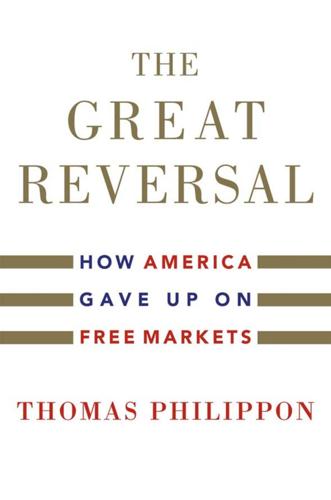
The Great Reversal: How America Gave Up on Free Markets
by
Thomas Philippon
Published 29 Oct 2019
But fintech innovations will not automatically enhance stability or democratize access to financial services. If we want to reap the benefits from better technology in finance, we need financial regulators who can stand up to the lobbies. CHAPTER 12 American Health Care A Self-Made Disaster People in middle age now have a fair chance of getting to Longevity Escape Velocity. AUBREY DE GREY Those in midlife now are likely to do worse in old age than the current elderly. ANNE CASE AND ANGUS DEATON NOTHING BETTER HIGHLIGHTS the clash between economists and techno-optimists than the topic of health. It is a sad irony that precisely at the time when scientists are beginning to argue that it is technologically plausible to prolong human life indefinitely, the US is experiencing the first peacetime decline of life expectancy of any democratic nation since the Industrial Revolution.
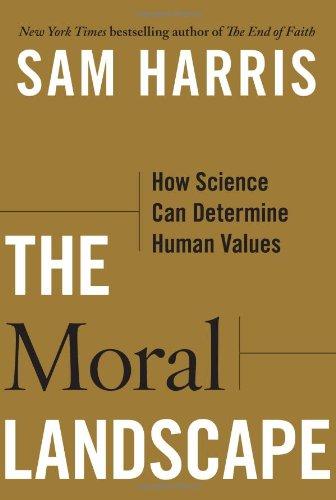
The Moral Landscape: How Science Can Determine Human Values
by
Sam Harris
Published 5 Oct 2010
It seems to me, however, that the concept of well-being is like the concept of physical health: it resists precise definition, and yet it is indispensable.18 In fact, the meanings of both terms seem likely to remain perpetually open to revision as we make progress in science. Today, a person can consider himself physically healthy if he is free of detectable disease, able to exercise, and destined to live into his eighties without suffering obvious decrepitude. But this standard may change. If the biogerontologist Aubrey de Grey is correct in viewing aging as an engineering problem that admits of a full solution,19 being able to walk a mile on your hundredth birthday will not always constitute “health.” There may come a time when not being able to run a marathon at age five hundred will be considered a profound disability.
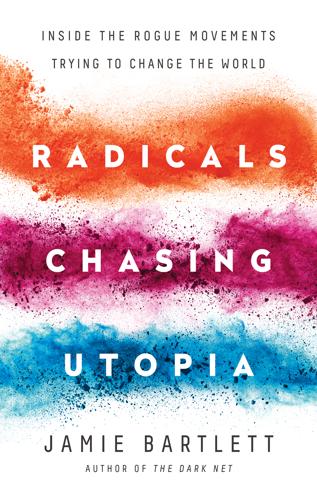
Radicals Chasing Utopia: Inside the Rogue Movements Trying to Change the World
by
Jamie Bartlett
Published 12 Jun 2017
Heidi Ledford, ‘Ageing: Much ado about ageing’, Nature, 2010, http://www.nature.com/news/2010/100324/full/464480a.html#B2; David Stipp, ‘Beyond Resveratrol: The anti-aging NAD fad’, Scientific American, 2015, http://blogs.scientificamerican.com/guest-blog/beyond-resveratrol-the-anti-aging-nad-fad/. 14. The world’s most famous longevity researcher is probably the US-based British scientist Aubrey de Grey, who is the Transhumanist Party’s anti-ageing adviser. He founded and runs the Strategies for Engineered Negligible Senescence research foundation, which spends around $5 million per year trying to cure age-related disease. De Grey believes that the first person to live to 1,000 may be alive now, and might already be over fifty.

New Laws of Robotics: Defending Human Expertise in the Age of AI
by
Frank Pasquale
Published 14 May 2020
Aaron Smith and Monica Anderson, Automation in Everyday Life (Washington, DC: Pew Research Center, October 4, 2017), https://www.pewinternet.org/2017/10/04/automation-in-everyday-life/. 2. HEALING HUMANS 1. Credit to Richard K. Morgan, Altered Carbon (New York: Ballantine, 2003) for the vision of bodies as “sleeves” for the mind. The general theme of rapid medical advance ending or long-delaying aging is common in medical futurism. Aubrey De Grey, Ending Aging: The Rejuvenation Breakthroughs That Could Reverse Human Aging in Our Lifetime (New York: St. Martin’s, 2008). 2. For an excellent overview of the law and policy issues raised by even this more realistic vision, see Ian Kerr and Jason Millar, “Robots and Artificial Intelligence in Healthcare” in Canadian Health Law & Policy, eds.

More Everything Forever: AI Overlords, Space Empires, and Silicon Valley's Crusade to Control the Fate of Humanity
by
Adam Becker
Published 14 Jun 2025
Similarly, it’s a stretch to call Star Trek communist—and it’s interesting that Thiel doesn’t seem to like the idea of everyone having whatever they need for free. Despite his apparent difficulty with understanding science fiction, Thiel thinks it’s an important source of inspiration. At the 2009 Singularity Summit, Thiel was one of the panelists in a discussion on “Changing the World,” alongside Eliezer Yudkowsky and longevity researcher Aubrey de Grey. In response to a question about what things people can build in order to change—and save—the world, Thiel told the audience that “there are many different things that one could be developing.… If you wanted to have a menu, I would just give you the list of science fiction books from the ’50s and ’60s and go through those as starting points.
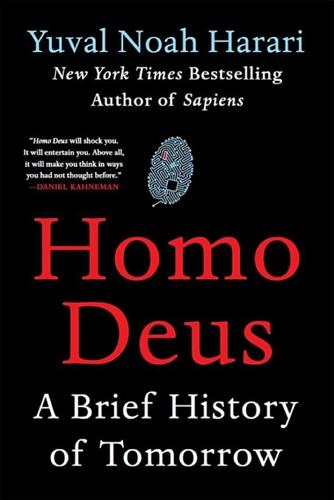
Homo Deus: A Brief History of Tomorrow
by
Yuval Noah Harari
Published 1 Mar 2015
It says that every human has a right to life, period. That right isn’t limited by any expiry date. An increasing minority of scientists and thinkers consequently speak more openly these days, and state that the flagship enterprise of modern science is to defeat death and grant humans eternal youth. Notable examples are the gerontologist Aubrey de Grey and the polymath and inventor Ray Kurzweil (winner of the 1999 US National Medal of Technology and Innovation). In 2012 Kurzweil was appointed a director of engineering at Google, and a year later Google launched a sub-company called Calico whose stated mission is ‘to solve death’.26 Google has recently appointed another immortality true-believer, Bill Maris, to preside over the Google Ventures investment fund.
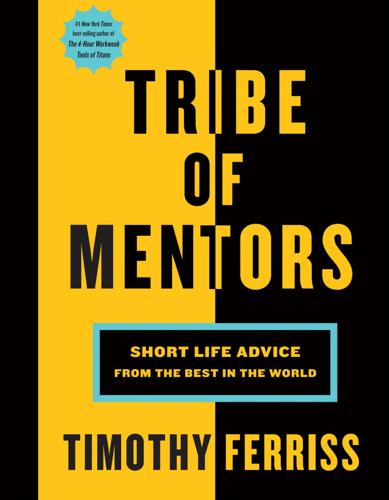
Tribe of Mentors: Short Life Advice From the Best in the World
by
Timothy Ferriss
Published 14 Jun 2017
I read Ray’s other books, which feature radical future science concepts, and it showed me how some of these ideas are actually attainable. Not just feasible in the distant future but in our lifetimes! It is incredible to think that some of these imaginative ideas, such as living forever or turning into a robot, could actually happen. [For example,] in the book Ending Aging, Dr. Aubrey de Grey talks about his research into how we can stop the degeneration of cells, essentially finding ways to extend life. Ray Kurzweil talks about the law of accelerating returns, which states that fundamental measures of information technology follow predictable and exponential trajectories. For instance, in the ’70s, we had a computer that was the size of a room and cost $250,000, and now we have a computer the size of my hand that is much more powerful.